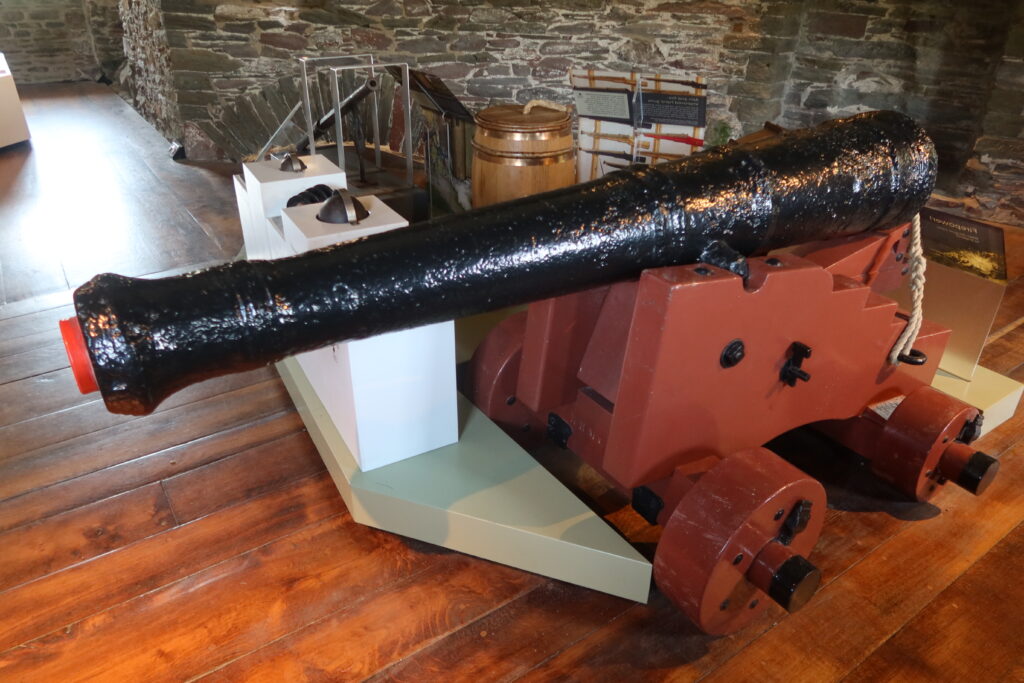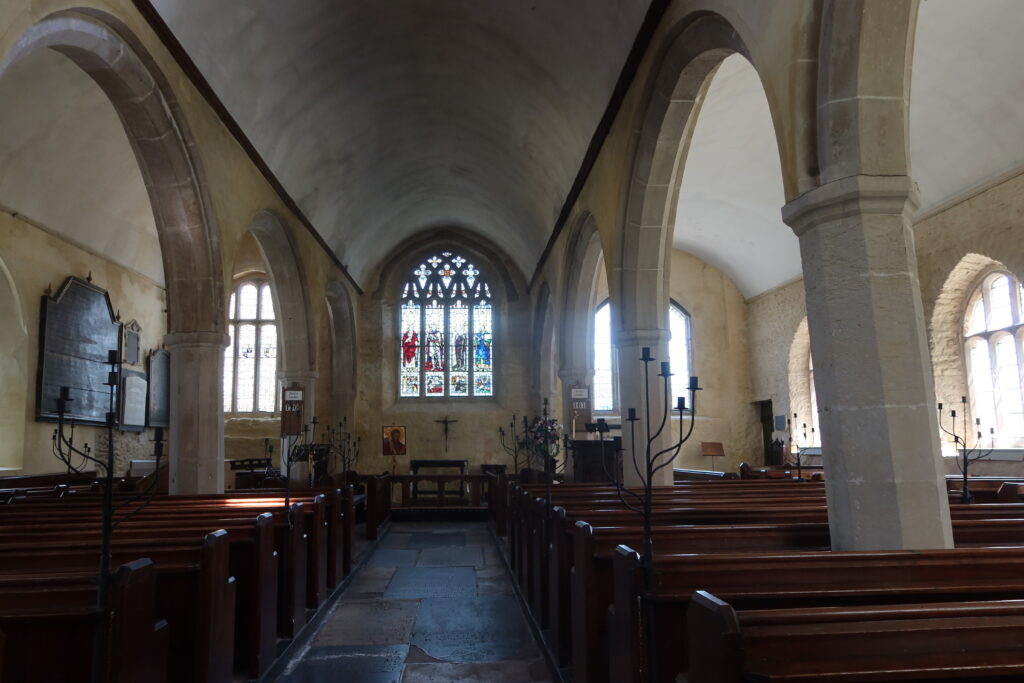How to visit Dartmouth Castle in South Devon
There are few places in Devon quite so steeped in history as Dartmouth Castle.
Perched at the mouth of the River Dart, the castle stands as a testament to the region’s vibrant past, with a history spanning back to the 14th century; it was even used for military reasons in World Wars One and Two!
Today, it’s a collection of historic buildings that operate as an English Heritage site and is the stand-out attraction of Dartmouth (and one of the best in South Devon!).
I recently visited Dartmouth Castle and loved the step back in Devon’s past, along with the epic coastal views of Sugary Cove and Castle Cove Beach.
So, if you’re planning to visit this slice of history or fancy a mini South West Coast Path walk, this article has all you need to know!
About Dartmouth Castle

Situated approximately a mile from Dartmouth Harbour, the impressive Dartmouth Castle offers an engaging and scenic journey into England’s past.
It was created as a defence for the River Dart and was owned by the town for over a century, before coming into the hands of Sir Peter Carew.
It was used throughout wars, including the Civil War, but ultimately opened as a tourist attraction, where visitors can learn about its fascinating tales.
Dartmouth Castle History

The busy port of Dartmouth was a buzzing hub from the 12th century onwards, and the Dart River was thought of as rather vulnerable to potential foreign attack and invasion.
So, upon orders from Richard II in 1388, during the Hundred Year’s War with France, a fort was constructed to guard the entrance to the Dart River.
It was initially used only in times of danger but eventually fortified with a new tower to accommodate guns; notably after the popularisation of gunpowder in the 15th century.
Edward IV endorsed Dartmouth’s fortifications in 1462, providing the townsmen with a generous annual sum of £30 for the next two decades.
This fortified gun tower later became the core of Dartmouth Castle.
Sir Peter Carew
Dartmouth Castle has seen multiple handovers and transformations throughout its existence.
The castle was of strategic importance, guarding against potential French assaults.
It was built on Carew land (just outside the township of Dartmouth, in the nearby borough of Stoke Fleming) causing a tug-of-war between the Carew family and the borough over ownership.
When Sir Peter Carew stepped up as lord and MP of Dartmouth in 1547, he found himself in control of a prime maritime hub and a chance to advance in the family dispute.
He took the castle over, changed the locks, and stirred up an age-old feud.
The ownership debacle ended up in court, with the borough regaining the castle in 1554.
After a royal pardon in 1556, Carew reclaimed his castle until his death in 1575.
Wartime history
Dartmouth Castle’s importance during times of war cannot be underestimated, playing vital roles during the First Civil War (1642-1646) and the hostilities with the Dutch and French in the 17th century.
Even during peacetime, Dartmouth Castle underwent refurbishments, one of the most notable being the rebuilding of the Victorian Forts and Artillery in 1861.
Since the early 20th century, the castle has been preserved as a historic monument and tourist attraction, even though it was reutilised for military purposes during both World Wars.
Where is Dartmouth Castle?
Dartmouth Castle is located about a mile away from the town of Dartmouth in South Devon, about 33 miles from Plymouth and 44 miles from Exeter.
How to get to Dartmouth Castle

Take a scenic boat ride from the town (cost £3.00) or enjoy a leisurely 20-minute walk, where you’ll bypass glorious coastal areas like Warfleet Creek and another English Heritage property Bayard’s Cove Fort (which is non-staffed as it’s so small!).
I opted to walk and didn’t find it too strenuous, although there is a bit of uphill and downhill walking in parts.
You can also drive to Dartmouth Castle from the town centre.
Most tourists reach Dartmouth by driving, but I used the Dartmouth Steam Railway and River Boat Company’s services on my recent trip.
With the Dartmouth Steam Railway and River Boat Company, you can take a boat from Totnes to Dartmouth or a steam train from Paignton to Kingswear and ferry over to the town.
Or, purchase a “Round Robin” ticket (this is what I did) which includes a bus, boat, ferry and steam train from Paignton – Totnes – Dartmouth – Kingswear and back to Paignton.
Dartmouth Castle Parking
There’s a small pay and display car park close to the castle entrance – this isn’t managed by the English Heritage, so members have to pay.
You could also park on the access road, which is free.
Alternatively, park in Dartmouth town centre and either walk or take the ferry to the castle.
Where to Buy Tickets?

You can purchase tickets to Dartmouth Castle online or at the small office and gift shop located in front of the castle.
Check out the website for up-to-date prices.
English Heritage Membership
If you find yourself regularly visiting English Heritage sites, have you thought about membership?
I’m a big fan of English Heritage membership.
Costing £69 for a single membership or £120 for joint membership per year, this gains you unlimited access to English Heritage attractions, plus lots of other perks.
Up to six kids go free with any English Heritage member, which makes their castles perfect for a family day!
Take a look at my English Heritage membership review to read more about it!
Can I See the Castle for Free?

You’ll need a ticket to see the interior of the castle, but the surrounding areas are open to explore free of charge.
The castle’s proximity to Sugary Cove Beach provides a beautiful spot for walks on the South West Coast Path.
Or, take the boat over to Kingswear and try to spot the castle as you walk towards the coast!
Facilities Available at Dartmouth Castle
There’s a range of facilities on-site at Dartmoor.
Toilets sit a little way before the ticket office, which is also home to a gift stop.
If you work up an appetite while exploring, enjoy a well-deserved rest at the castle’s tea rooms.
Offering an array of sandwiches and cakes, the tea rooms are perfect to put your feet up and chill out after exploring.
Sit outside to enjoy the spectacular vistas!
Things to See at Dartmouth Castle

Victorian Forts and Artillery
The Victorian Forts and Artillery were built in the 1860s, as there was an increasing paranoia about new warfare technology attacking coastal towns – and townspeople were worried that Dartmouth could be used as a weak spot to invade Plymouth.
This area offers a fascinating glimpse into the past, complete with audio effects that’ll transport you right back in time – you’ll hear the sounds of cannons being loaded and fired, and learn about how cannon warfare worked!
The Gun Tower
The Gun Tower is the other part of Dartmouth Castle.
Providing an abundance of information about the tower’s history and purpose, at the gun tower kids can enjoy interactive features such as the guard’s games and try on hats!
For those who don’t mind a bit of a climb, ascending the steep spiral steps to the top of the tower is a must-do.
The steps are quite taxing, but the view from the top – of the end of the River Dart and the bright blue sea – is mesmerising.
St Petrox Church

Perched on the doorstep of Dartmouth Castle’s imposing Gun Tower, St Petrox Church is the oldest among Dartmouth’s trio of parish churches – it first was first mentioned in an 1192 deed as the “monastery of St Peter.”
The church once served dual roles – not just a spiritual hub for the parishioners but also a guiding luminary for vessels navigating the harbour entrance and the residents of South Town.
St Petrox is open every day, and you don’t need a Dartmouth Castle ticket to visit.
Dartmouth Castle Opening Times
Dartmouth Castle is open to visitors every day from 10 am to 5 pm.
FAQs about Dartmouth Castle
Is Dartmouth Castle Dog Friendly?
Yes, Dartmouth Castle welcomes dogs, making it a perfect location for a family outing or a day trip with your furry friend.
How Long Do I Need for Dartmouth Castle?
The castle itself can be explored in about an hour. However, if you wish to take a relaxing walk around the scenic coast path, set aside a bit more time for your visit.
Is it Worth Visiting Dartmouth Castle?
Absolutely! Dartmouth Castle is a must-visit for anyone with an interest in history.
The castle, with its rich and fascinating past, provides an insightful peek into different eras.
For those less enthralled by history, the castle’s impressive exterior and stunning surroundings still make for a worthwhile visit.
Who lived in Dartmouth Castle?
Nobody lived in Dartmouth Castle – it’s more of a defensive fortification than an accommodation – but Sir Peter Carew seized it for a while, making him the owner.
Other than that, it was owned by the town, and now by the English Heritage.
Are you planning a trip to Dartmouth Castle?

Dartmouth Castle, with its rich history and stunning views, makes for a memorable destination on any trip to Dartmouth.
Whether you’re a history aficionado or simply someone who appreciates natural beauty, this castle delivers.
So, when you find yourself in Dartmouth, take the time to visit this historic gem!






